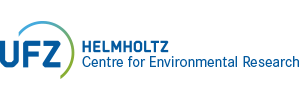Publication Details |
| Category | Text Publication |
| Reference Category | Journals |
| DOI | 10.1016/j.jhazmat.2024.136363 |
Licence  |
|
| Title (Primary) | Effect of tunnel wash water treatment processes on trace elements, organic micropollutants, and biological effects |
| Author | Vistnes, H.; Sossalla, N.A.; Uhl, W.; Sundsøy, A.W.; Asimakopoulos, A.G.; Spahr, S.; Escher, B.I.
|
| Source Titel | Journal of Hazardous Materials |
| Year | 2024 |
| Department | ZELLTOX |
| Volume | 480 |
| Page From | art. 136363 |
| Language | englisch |
| Topic | T9 Healthy Planet |
| Supplements | https://ars.els-cdn.com/content/image/1-s2.0-S030438942402942X-mmc1.docx https://ars.els-cdn.com/content/image/1-s2.0-S030438942402942X-mmc2.xlsx |
| Keywords | Tunnel wash water (TWW); Granular activated carbon (GAC); Per- and polyfluoroalkyl substances (PFAS); In vitro bioassays; Persistent, Mobile, and Toxic (PMT) substances; Very Persistent and Very Mobile (vPvM) Substances |
| Abstract | Tunnel wash water (TWW) contains high levels of trace elements and organic micropollutants, especially in the dissolved fraction. Discharge poses significant environmental risks. This field study aimed at improving conventional sedimentation treatment by addition of novel secondary treatments: bag filtration, ceramic microfiltration, or granular activated carbon (GAC) filtration. Removal of nine trace elements, 16 polycyclic aromatic hydrocarbons (PAHs), 38 per- and polyfluoroalkyl substances (PFASs), seven benzothiazoles (BTHs), seven benzotriazoles (BTRs), five bisphenols (BPs), and five benzophenones was investigated. Primary sedimentation significantly reduced particles and associated contaminants, achieving over 73 % average removal for trace elements, 65 % for PAHs, and 71 % for PFASs. Subsequent GAC removed over 70 % of dissolved Cr, Cu, Pb, and Zn and over 92 % of dissolved PFASs, BTHs, BTRs, and BPs, including several persistent, mobile and toxic compounds. Following GAC filtration, Cr, Ni, Pb, anthracene, fluoranthene, perfluorooctanesulfonic acid, and bisphenol-A were below environmental quality standards (EQS). GAC consistently reduced responses in in vitro bioassays with endpoints activation of the aryl hydrocarbon receptor, oxidative stress response, and neurotoxicity below effect-based trigger values for surface water. GAC filtration is thus recommended for future TWW treatment. Assessing water quality remains a challenging task due to lack of EQSs for many chemicals. |
| Persistent UFZ Identifier | https://www.ufz.de/index.php?en=20939&ufzPublicationIdentifier=29920 |
| Vistnes, H., Sossalla, N.A., Uhl, W., Sundsøy, A.W., Asimakopoulos, A.G., Spahr, S., Escher, B.I., Meyn, T. (2024): Effect of tunnel wash water treatment processes on trace elements, organic micropollutants, and biological effects J. Hazard. Mater. 480 , art. 136363 10.1016/j.jhazmat.2024.136363 |
|
